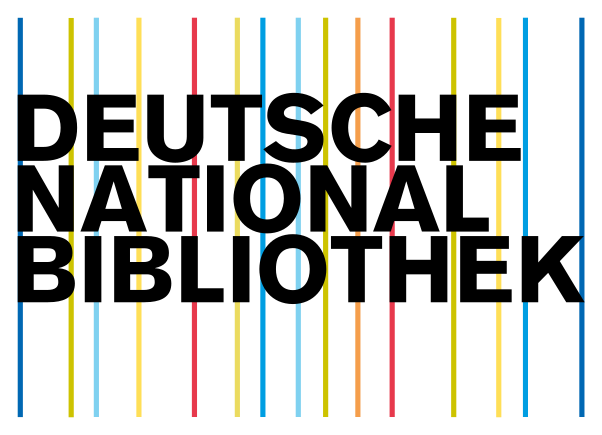Hand Gesture Recognition for the Paralysed
DOI:
https://doi.org/10.5281/zenodo.4018805Keywords:
Marker, Gesture, Human Computer Interaction, HCI, IoT, Fingertips, Embedded SystemsAbstract
Paralysis is a condition where control over the body is either partially or completely lost. The individuals who have this condition find it difficult to move around or even perform any other actions. This makes them mentally weak as they have to completely rely on others. This paper shows different popular methods developed to help these individuals to become self sufficient to a certain extent. Disadvantages of these methods have also been discussed. Also, proposed gesture recognition technique is explained.
Downloads
References
C. Shahanaz, A. Maksud, S. A. Fattah and S. S. Chowdhury, “Low-cost Smart Electric wheelchair with Destination Mapping and intelligent control Features,” In IEEE International Symposium on Technology and Society, Australia, 2017.
F. Camastra, and D. De Felice, “LVQ-based hand gesture recognition using a data glove,” Neural Nets and Surrounding, pp. 159-168, Springer Berlin Heidelberg, 2013.
B. Domer, “Hand shape identification and tracking for sign language interpretation. In ‘looking at people: recognition and interpretation of human action”, In Workshop WS26 at the International Joint Conference on Artificial Intelligence, Chambery, France, 1993.
Z. Feng, B. Yang, Y. Chen et al. , “Features extraction from hand images based on new detection operators,” Patt. Recog. , vol. 44, no. 5, pp.1089-1105, 2011.
J. Triesch and C. von der Malsburg,” A system for person independent hand posture recognition against Complex backgrounds,” IEEE Transactions on pattern analysis and Machine Intelligence, vol.23, no.12, pp.1449-1453, 2001.
S. K. Kang, K. Chung, and J. H. Lee, “Real- time tracking and recognition system for interactive telemedicine health services,” Wireless Personal Communications, vol. 79,no. 4, pp. 2611-2626, 2014.
S. F. Wang, C. Li, D. H. Kong, and B. C. Yin, “Extracting hand articulations from monocular depth images using curvature scale space descriptors,” Frontiers of Information Technology & Electronic Engineering, vol. 17, pp. 41-54, 2016.
P. Gupta, N. da Vitoria Lobo, and J. J. Laviola, “Markerless tracking and gesture recognition using polar correlation of camera optical flow,” Machine vision and Applications, vol. 24, no. 3, pp. 651-666, 2013.
C. Wang, Z. Liu, and S. C. Chan,” Superpixel-based hand gesture recognition with Kinect depth camera.” IEEE Transactions on Multimedia, vol. 17, no.1, pp. 29-39, 2015.
J. Aleotti, A. Cionini, L. Fontanili, and S. Caselli, “Arm gesture recognition and humanoid imitation using functional principal component analysis,” In IEEE/RSJ International Conference on Intelligent Robots and System, pp. 3752-3758. IEEE, 2013.
C. Tomasi, S. Petrov, and A. Sastry,” 3D tracking= classification+ interpolation,” In Ninth IEEE International Conference on Computer Vision, 2003. Proceedings, pp. 1441-1448. IEEE, 2003.
H. J. Lee, and J. H. Chung, “Hand gesture recognition using orientation histogram,” In TENCON 99. Proceedings of the IEEE Region 10 Conference, vol. 2, pp. 1355-1358. IEEE, 1999.
T. H. H. Maung, “Real-time hand tracking and gesture recognition system using neural networks,” World Academy of Science, Engineering and Technology, vol. 50, pp. 466-470, 2009.
N. H. Dardas and N. D. Georganas, “Real-time hand gesture detection and recognition using bag- of- features and support vector machine techniques,” IEEE Transactions on Instrumentation and Measurement, vol. 60, no. 11, pp. 3592-3607. 2011.
Bader Dakhilallah Samran Alrashdi" Smart Navigation and Control System for Electric Wheelchair" American Journal of Engineering Research (AJER), vol.8, no.04, 2019, pp.90-94
Y. Li and J. Yang, "Intelligent Wheelchair Based on Brainwave," 2018 International Conference on Intelligent Transportation, Big Data & Smart City (ICITBS), Xiamen, 2018, pp. 93-96.
MIRIN, Siti Nur Suhaila; MOHD ANNUAR, Khalil Azha; YOOK, Chai Pui. Smart wheelchair using android smartphone for physically disabled people. International Journal of Engineering & Technology, [S.l.], v. 7, n. 2, p. 453-457, apr. 2018. ISSN 2227-524X. Available at: <https://www.sciencepubco.com/index.php/ijet/article/view/9190>. Date accessed: 11 apr. 2020. doi:http://dx.doi.org/10.14419/ijet.v7i2.9190.
Leandre Nsengumuremyi, Aman Jung Karki, Manjunath C. R , , , , , ."Smart Wheelchair Using Medical Iot", Volume 6, Issue V, International Journal for Research in Applied Science and Engineering Technology (IJRASET) Page No: 387-393, ISSN : 2321-9653,
R. Blatt, S. Ceriani, Brain control of a smart wheelchair, in: Intelligent Autonomous Systems, vol. 10, ISO Press, 2008.
Deepak Kumar Lodhi et al, International Journal of Computer Science and Mobile Computing, Vol.5 Issue.5, May- 2016, pg. 433-438
Geethu Suresh, S.Shanmugaraju,”E-Sense Algorithm Based Wireless Wheelchair Control UsingBrain Waves” IOSR Journal of Electrical and Electronics Engineering (IOSR-JEEE) e-ISSN: 2278-1676,p-ISSN: 2320-3331, Volume 11, Issue 3 Ver. I (May. – Jun. 2016), PP 19-26.
Vishal V. Pande, Nikita S. Ubale, Darshana P. Masurkar, Nikita R. Ingole, Pragati P. Mane, "Hand Gesture Based Wheelchair Movement Control for DisabledPerson Using MEMS", International Journal of Engineering Research and Applications, vol. 4, no. 4, pp. 152-158, April 2014.
G. Pires et al.,“Autonomous wheelchair for disabled people”, Proceedings of the IEEE International Symposium on Industrial Electronics (ISIE), Guimarães, Portugal, pp. 797-801, 1997.
Downloads
Published
How to Cite
Issue
Section
URN
License
Copyright (c) 2020 Perspectives in Communication, Embedded-systems and Signal-processing - PiCES/ WorldServe Online

This work is licensed under a Creative Commons Attribution 4.0 International License.






